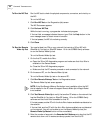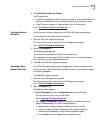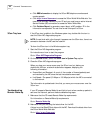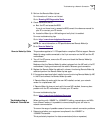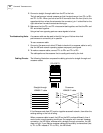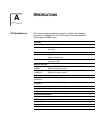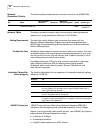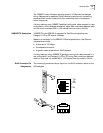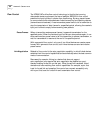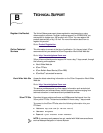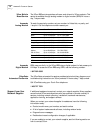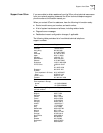
68 APPENDIX A: SPECIFICATIONS
Flow Control The 3CR990 NICs utilize flow control technology to throttle the incoming
data packet stream and prevent the loss of packets. IEEE 803.2x flow control
prevents the input buffers of a device from overflowing. By using pause frames
to communicate buffer status between linked transmitting and receiving devices
(transmitters and receivers). A receiver sends a pause frame to tell a transmitter to
stop the transmission of data frames for a specified period, allowing the receiver’s
input port buffers to empty before receiving new packets.
Pause Frames When a transmitter receives pause frames, it suspends transmission for the
specified period. When the receiver’s input buffers can store packets again, it can
either send another pause frame to tell the transmitter to resume transmission, or
wait for transmission to resume at the end of the specified period.
With asymmetric flow control, only one of two linked devices can receive pause
frames. With symmetric flow control, both linked devices can send and receive
pause frames.
Link Negotiation Related to flow control is the auto-negotiation capability, in which linked devices
advertise their flow control capabilities and automatically select the best common
mode of communication.
Rare cases (for example, linking to a device that does not support
auto-negotiation) may require that auto-negotiation be disabled on a port,
thereby enabling forced link on that port. When forced link is enabled, linked
devices must have matching flow control capabilities. For example, a port that
is set for forced link and reception flow control can connect successfully only
with a port that is set for forced link and transmission flow control.



